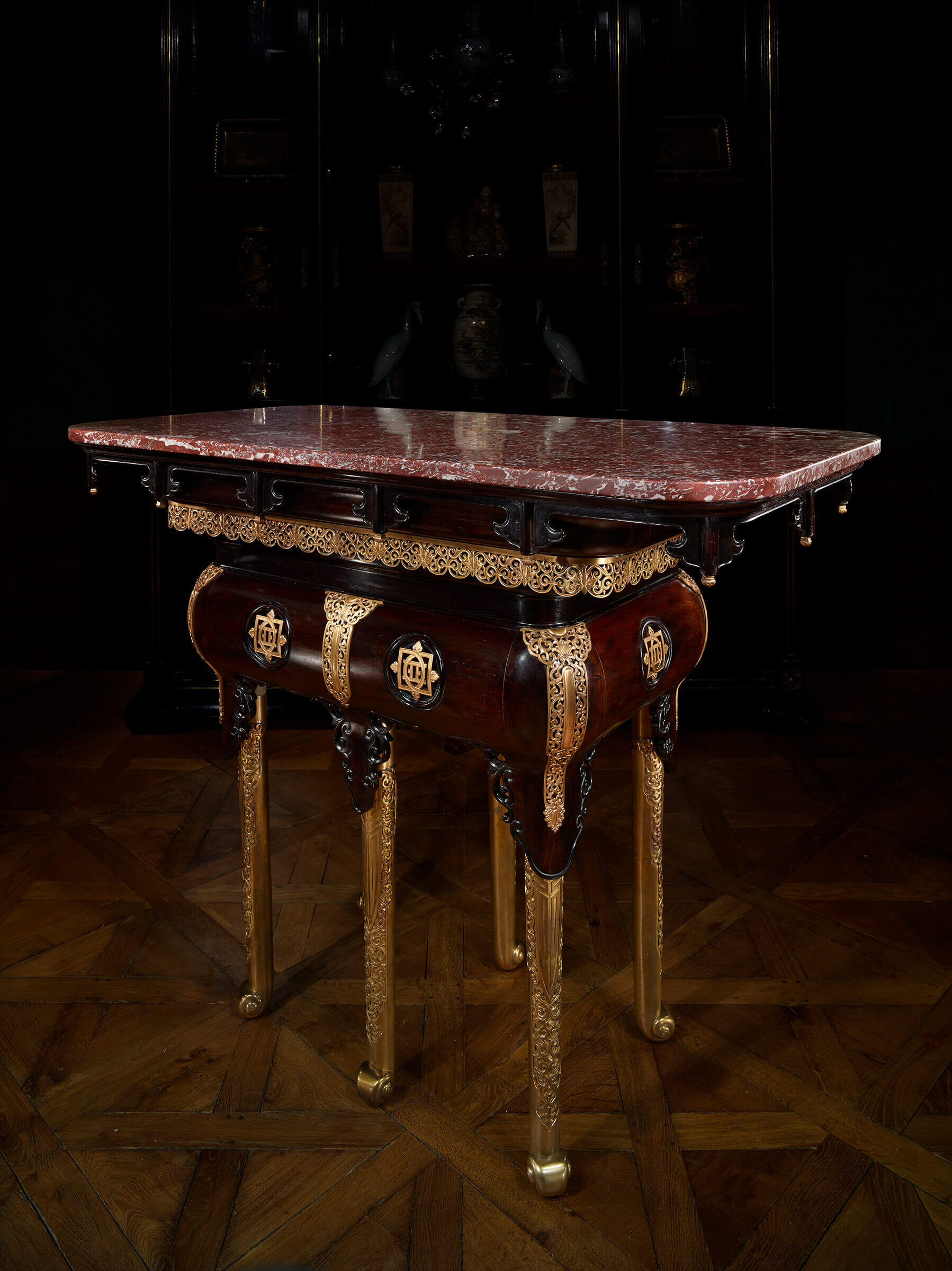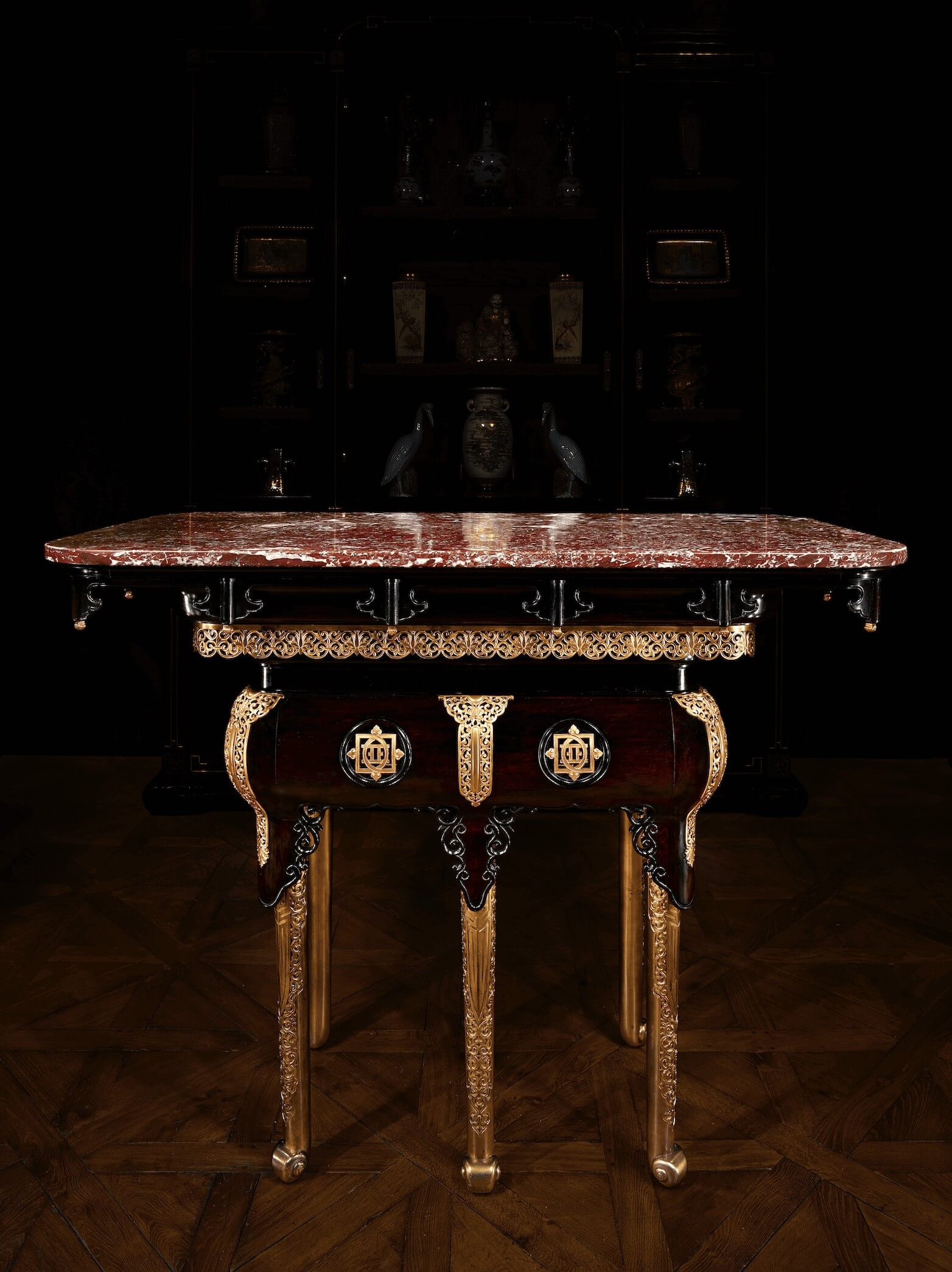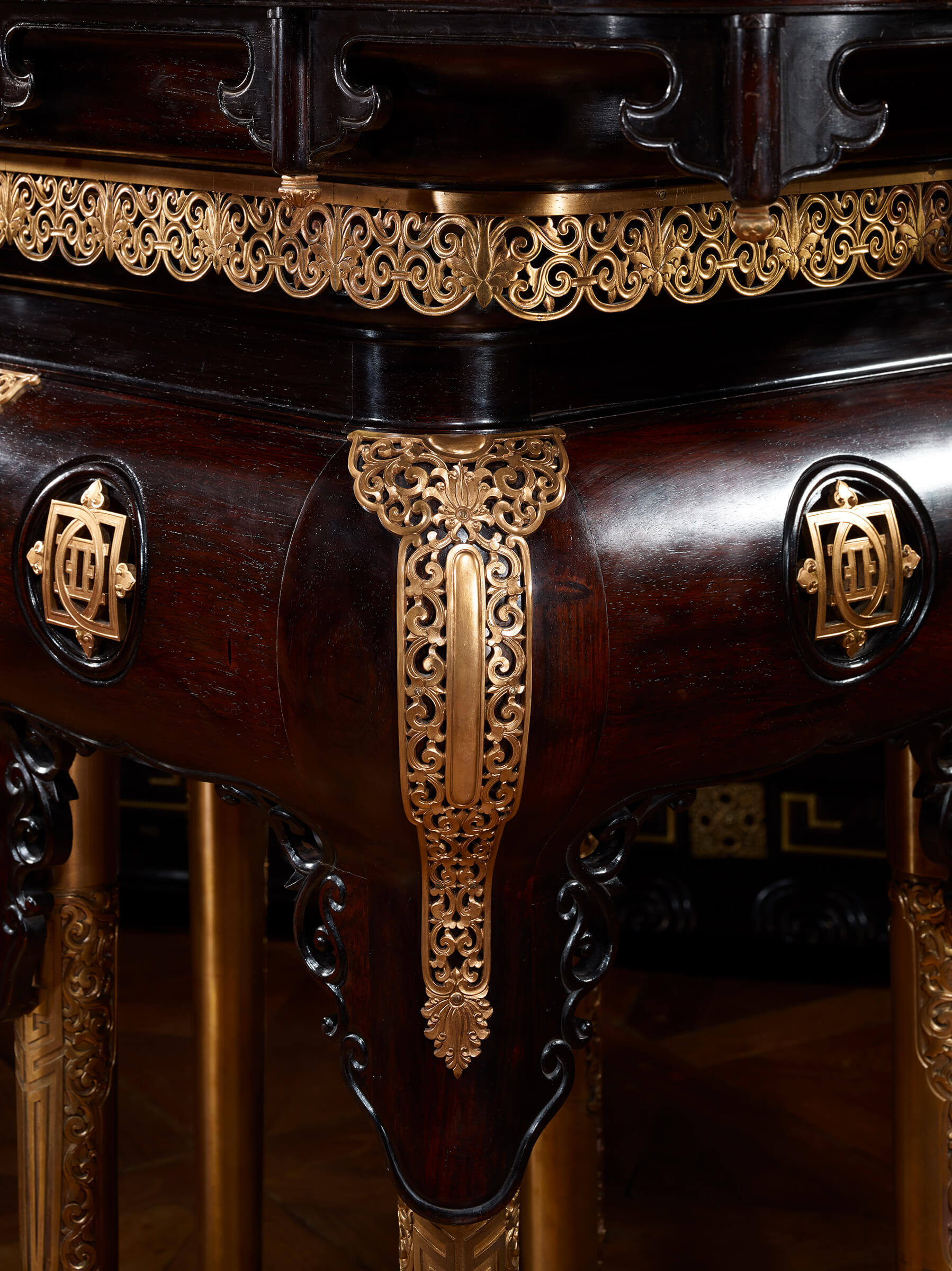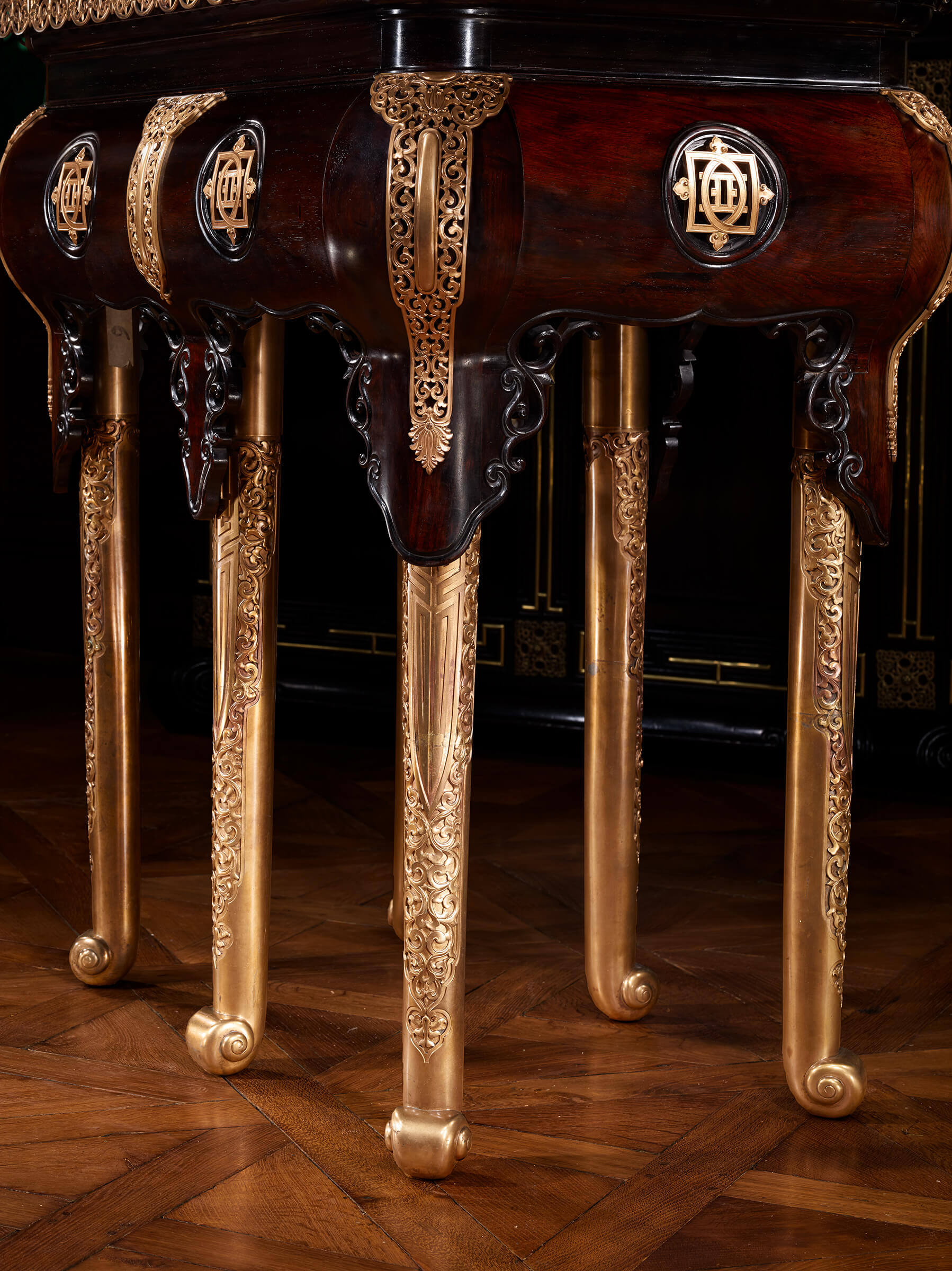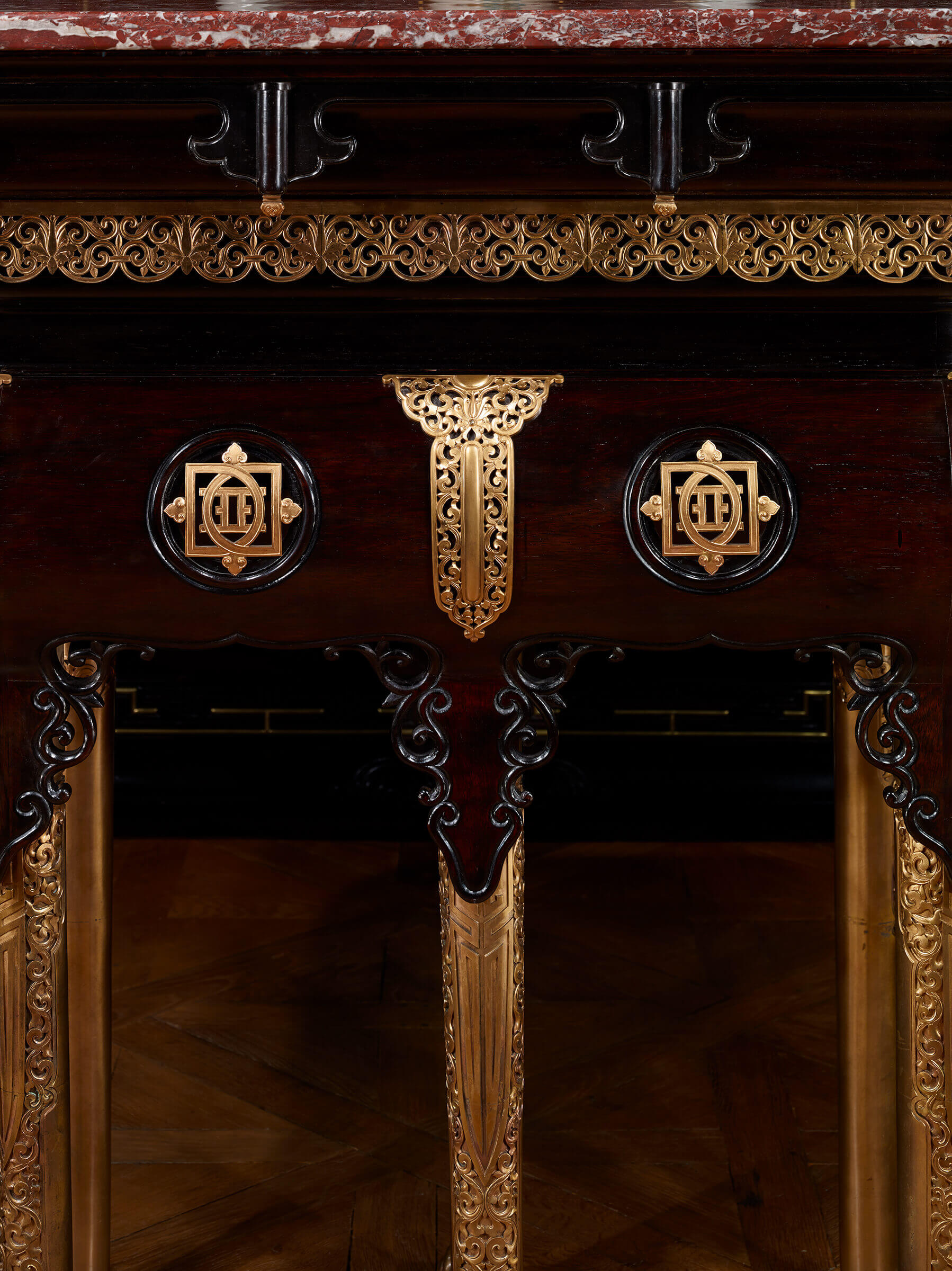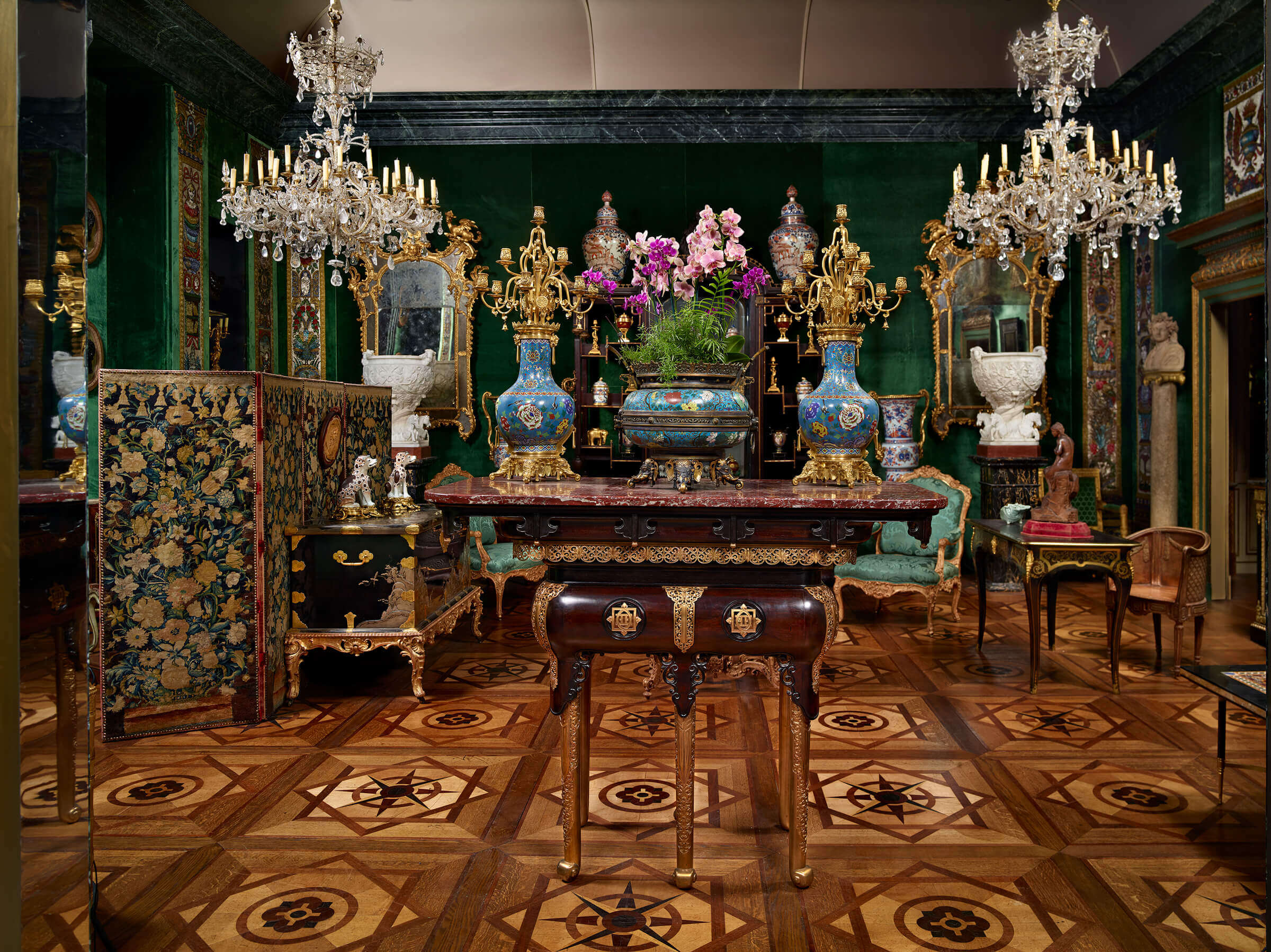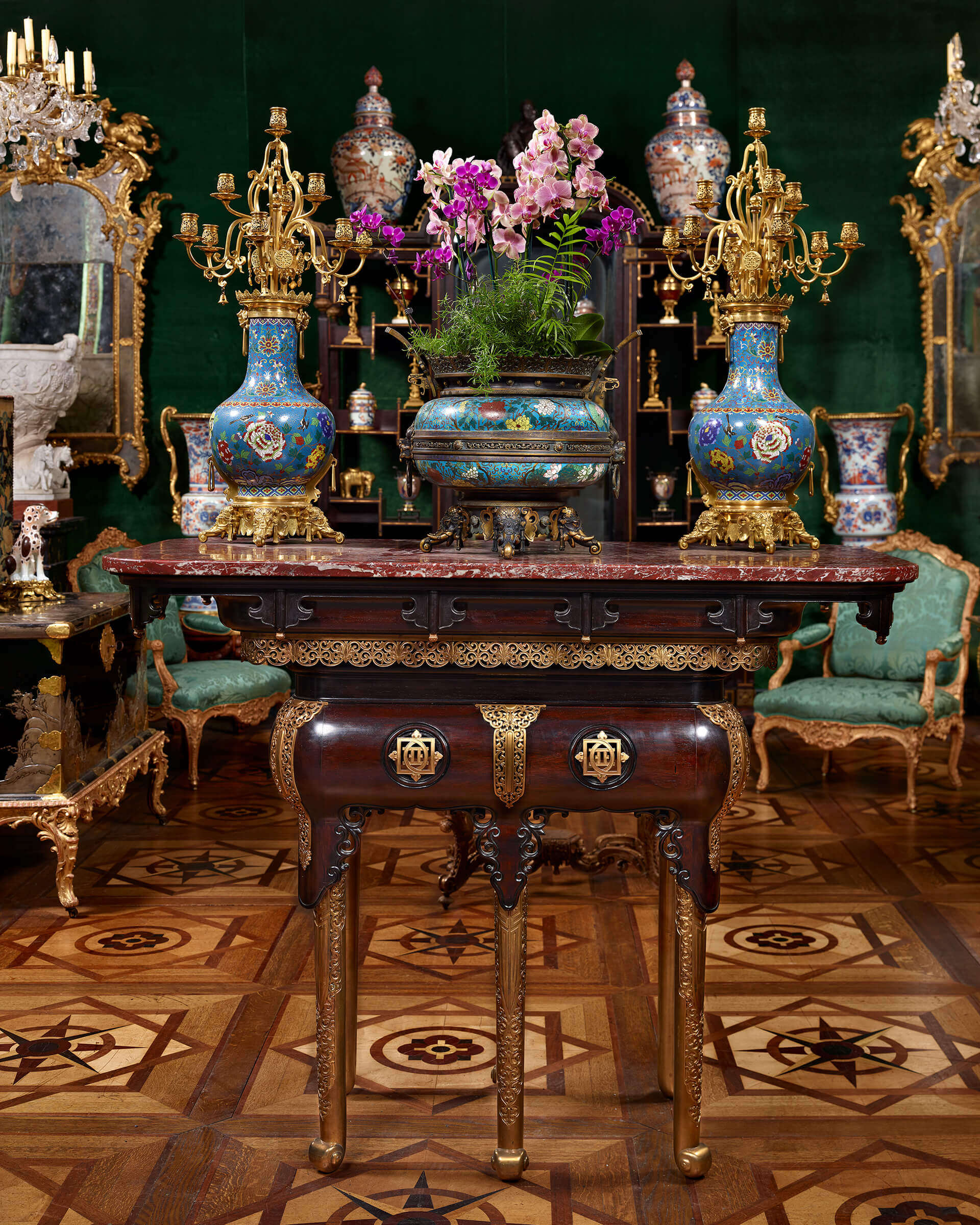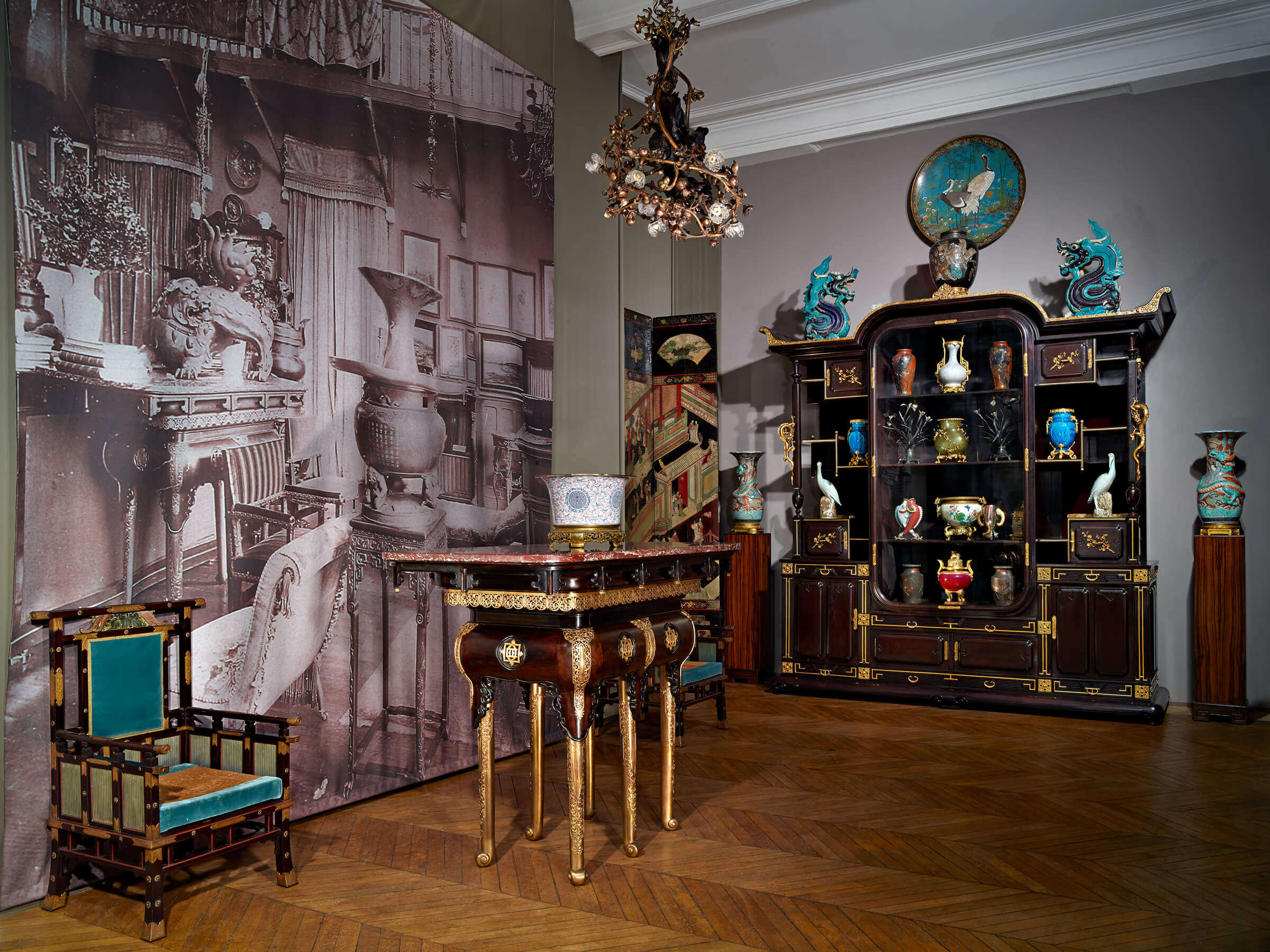

Chased and gilded bronze ornaments with the monogram of the painter Edouard Detaille.
Solid rosewood; chased and gilt bronze; red Griotte de Campan marble.
H. 120 cm. (47 ¼ in.); W. 153 cm. (60 ¼ in.); D. 82 cm. (32 ¼ in.).
MARKS: signed E.L. on the bronzes.
HISTORY: former collection of the painter Edouard Detaille (1848-1912) ; Catalogue des tableaux, objets d’art et d’ameublement (…) provenant de la succession de M. Edouard Detaille, Paris, Hôtel Drouot, 10-11 March, 1913, lot 204.
LITERATURE: Edouard Lièvre, Hors-série de Connaissance des arts, SFPA, Paris, 2004, p. 18-19 ; Roberto Polo, “Edouard Lièvre, un créateur des arts décoratifs au XIXe siècle”, L’Estampille-L’Objet d’art, n° 394, septembre 2004, p. 104-105; François Robichon, Edouard Detaille, Un siècle de gloire militaire, Paris, 2007.
This table is inspired by the typical sobriety of Ming furniture and brilliantly readapts one of the great classical pieces of Chinese cabinetmaking. With its remarkably original shape and design, this piece — only one copy of which is known to date— represents one of the most innovative models designed by Edouard Lièvre. It should be compared to the stand of the famous cabinet purchased in 1878 by the faience-maker from Bordeaux, Albert Vieillard (1841-1895), and kept in the collections of the Musée d’Orsay. Commissioned directly from Edouard Lièvre, this piece remained in the collections of the artist until his death in 1912.
Born into a close-knit upper middle-class family in 1848, Edouard Detaille (1848-1912), the eldest of eight children, showed very early gifts for drawing. His first painting shown at the Salon in 1868 was hailed by the critics but it was above all the fact that it was purchased by Princess Mathilde, the cousin of Emperor Louis-Napoleon, which turned Detaille, aged 20, a celebrity everyone knew (Sainte-Beuve, Théophile Gautier, the Goncourt brothers and Flaubert).
As Detaille’s notoriety grew, his townhouse on boulevard Malesherbes soon became a meeting place for foreign princes, politicians and chiefs of state. Detaille had an extraordinarily open mind for the world and in a few years’ time won considerable international social and cultural recognition. He was received by the English Court at Windsor Castle and was the close friend of Czar Alexander III and a great friend of Félix Faure.
